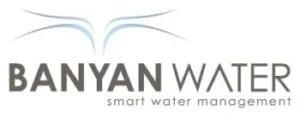If you manage a large property, odds are you’re managing a large water bill. With increased pressure to save water, it’s important to know what tools and devices might help you drive down those bills and make your property more sustainable at the same time.
 Simple devices that save water
Simple devices that save water
Most properties are using the most water in the bathrooms and outdoors. Here are a few of the devices that can easily decrease your property’s water use in these crucial areas.
Saving Water in Restrooms
In almost every type of commercial, educational, or office building, restrooms are the top area of water consumption. This means that if you can find ways to reduce water use in restrooms, you can make a dent in your biggest area of water use. Here are a few ways to conserve restroom water without disturbing building occupants.
Aerators
According to the Sierra Club, “Aerators are small, quiet superheroes that conserve water by mixing air into a faucet’s stream.” This small and simple device, which can be easily added to most faucets, can reduce the amount of water used by 30%.
Low Flow Toilets
While not a small investment, low flow toilets can save tremendous amounts of water, offsetting the initial cost of purchasing and installing them. If you’re in a multifamily complex or building that uses traditional toilets, using WaterSense labeled models can likely save you at least 20% of water use.
Even more astonishing is the amount of water that could be saved on the flushometer-valve toilets frequently found in office buildings and other commercial properties. These toilets vary widely in terms of the gallons per flush. Some are as high as 3 – 7 gallons per flush. Newer, WaterSense labeled flushometer-valve toilets are required to use only 1.28 gallons per flush, a tremendous reduction.
The EPA estimates that “By replacing old, inefficient flushometer-valve toilets with WaterSense labeled models, a 10-story office building with 1,000 occupants could save nearly 1.2 million gallons of water and nearly $10,000 per year. Of those savings, nearly 870,000 gallons of water and $7,600 in water costs per year can be achieved by replacing the toilets in the women’s restrooms alone.”
Water-Efficient Showerheads
For multifamily properties or office buildings with gymnasiums, showers are one of the biggest water users, accounting for nearly 17% of residential indoor water use. According to the EPA, an efficient showerhead will save about 2,900 gallons of water per year.
Saving Water Outdoors
Outdoor watering is often the biggest area of water waste for properties. In many cases, properties could use far less water outdoors without impacting the health of their landscape. Banyan Water has found that most properties could be using 50-70% less irrigation water if it is managed properly.
Smart Irrigation Controllers
Smart irrigation controllers are designed to help automate the process of saving water outdoors. They often have online control panels, automatically turn off irrigation when it rains, and make it easier for landscapers to precisely schedule watering times. Adding managed irrigation services like Banyan Water offers can put an even finer point on a property’s irrigation water needs and deliver precisely the amount of water needed, when it is needed. This increases water savings over a smart controller alone.
Rainfall Sensors & Shutoff Devices
If your property isn’t ready for a smart irrigation controller or managed service, a simple and inexpensive upgrade to your irrigation system is a rainfall sensor and shutoff device. These tools detect rain on your property and automatically turn off irrigation when it is raining or has rained recently. This is a simple fix that will save you the frustration of watching your sprinklers run in the rain, which wastes a lot of water each time it happens. Most systems can be retrofitted with rain sensors and shutoff devices for a relatively low investment.
The Power of Information
With conservation programs, awareness of how much water is being used and what activities are using the most water is a powerful tool. Software that tracks and displays water use can help building occupants and residents to understand and decrease their usage. Share as much information with water users as you can. This simple act will help people to be more aware of their use, which tends to lead to a decrease in consumption.
Saving water on your property means saving money on water bills and contributing to a more sustainable built environment. The devices mentioned above can help to significantly decrease your property’s water use. Check out the EPA WaterSense website for a list of water efficient products and fixtures that could make sense for your building.
